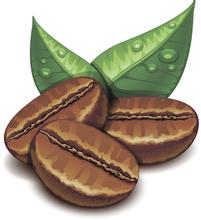Flavor description of Brazilian Minas Coffee Bean introduction to the processing manor in the region of taste production
Flavor description of Brazilian Minas Coffee Bean introduction to the processing manor in the region of taste production
In 1974, Brazil's national treasure Datra Manor was founded in the Patrochino region of Serrado in the central and western part of Minas Province. it is a scientific and technological coffee estate group. Its six coffee estates are distributed in the five producing areas of Serrado and Mojiana, and then select the most suitable varieties according to the altitude, climate, soil quality and microclimate of each region, so as to maximize the aromatic substances of each variety. Then after the expert cup test and comparison, it was decided to use the sun or half-sun treatment, in order to draw out the most abundant sweet elves. After 20 years of research and cultivation, the sensational "Datra Sweet Confluence" was born under layers of checks by scientists. According to the drier climate in Brazil, research units in Brazil have developed a half-sun method to shorten the processing time. After removing the pulp, the coffee fruit will be exposed to the pectin-coated pods for one to three days, and then machine-dried to a moisture content of 12%, which can be put into a storage container. The Brazilian half-sun method greatly shortens the work time (the traditional sun method takes two to three weeks), also reduces the chance of coffee beans getting a bad smell, and the quality is greatly improved. Moreover, the half-sun method also inherits the advantages of the sun method to improve the sweetness, but reduces the thankless soil flavor, and enhances the fruit aroma and sweetness, so it is most suitable for a single product, so the half-day method has become a necessary "wardrobe" for Brazilian boutique beans and won praise from international coffee experts. The success of the reform has increased the confidence of coffee farm operators. Coffee farms in Brazil will choose solarization, half-sun, washing, half-washing or honey treatment, which is very popular in the boutique coffee industry in recent years, according to the dry and humid climate. To show the best regional flavor. For example, Serrado in the Midwest of Minas, where the humidity is ultra-low, is still mainly in the sun. The manor here believes that as long as the sun is strictly controlled, it can best highlight Serrado's unique nutty flavor and sweetness, while half-sun has become a supporting role in Serrado. The manor in South Minas is the most inclusive, using half-sun, sun and water washing, respectively. Brazil has such a variety of treatment options that it is rare in the world except for coffee in Ethiopia, its hometown.
Mogiana in the northeast of Sao Paulo province (north to south Minas) is also dominated by shaded bourbon, which is ranked as the three major boutique producing areas in Brazil along with Serrado and South Minas. Well-known estates in South Minas include Hope Manor and Montague. The famous "Datra Manor" and "Highland Manor" groups also have several large estates in Serrado and Mojiana. These four cup test permanent winning estates have become the treasures of the town shops of South Minas, Serrado and Mojiana. Since 1999, the manor that has won the bid for "extraordinary cup" of national treasure beans in Brazil, with South Minas as the largest number, is the backbone of Brazilian boutique coffee. As for the north-central mausoleum of Minas (Chapada de Minas) is not a boutique producing area, mostly for general commercial beans. To sum up, South Minas, the central and western Mesa of Minas (i.e. Serrado) and the higher forest areas in the southeast can all be called the boutique producing areas of Minas province.

Important Notice :
前街咖啡 FrontStreet Coffee has moved to new addredd:
FrontStreet Coffee Address: 315,Donghua East Road,GuangZhou
Tel:020 38364473
- Prev

Description of G1G2 Flavor of Yejiaxuefei Coffee Bean Variety introduction of Regional treatment method for Manor production
G1G2 Flavor Coffee beans description of Taste Flavor Variety introduction Japanese beans are mainly beans harvested in the second half of the harvest season, that is, the harvest from December to January, the beans are harvested at high altitudes. The drying of the first stage is very important. Dry the beans on a thin cloth to avoid fermentation, and then put the coffee on the peach blossoms.
- Next

Flavor characteristics of Snow Mountain Coffee in Colombia Variety introduction of Regional treatment method for manor production
Columbia Snow Mountain Coffee Flavor characteristics Manor Regional treatment Variety introduction as it is the first attempt, the overall feeling of coffee is not at its best. Mainly presented in the front taste is a little dirty, but the dried fruit flavor is very obvious. At the same time, we are surprised that although it is light baking, the acidity is not very high. The aftertaste is quite obvious, although there is one.
Related
- Detailed explanation of Jadeite planting Land in Panamanian Jadeite Manor introduction to the grading system of Jadeite competitive bidding, Red bid, Green bid and Rose Summer
- Story of Coffee planting in Brenka region of Costa Rica Stonehenge Manor anaerobic heavy honey treatment of flavor mouth
- What's on the barrel of Blue Mountain Coffee beans?
- Can American coffee also pull flowers? How to use hot American style to pull out a good-looking pattern?
- Can you make a cold extract with coffee beans? What is the right proportion for cold-extracted coffee formula?
- Indonesian PWN Gold Mandrine Coffee Origin Features Flavor How to Chong? Mandolin coffee is American.
- A brief introduction to the flavor characteristics of Brazilian yellow bourbon coffee beans
- What is the effect of different water quality on the flavor of cold-extracted coffee? What kind of water is best for brewing coffee?
- Why do you think of Rose Summer whenever you mention Panamanian coffee?
- Introduction to the characteristics of authentic blue mountain coffee bean producing areas? What is the CIB Coffee Authority in Jamaica?

